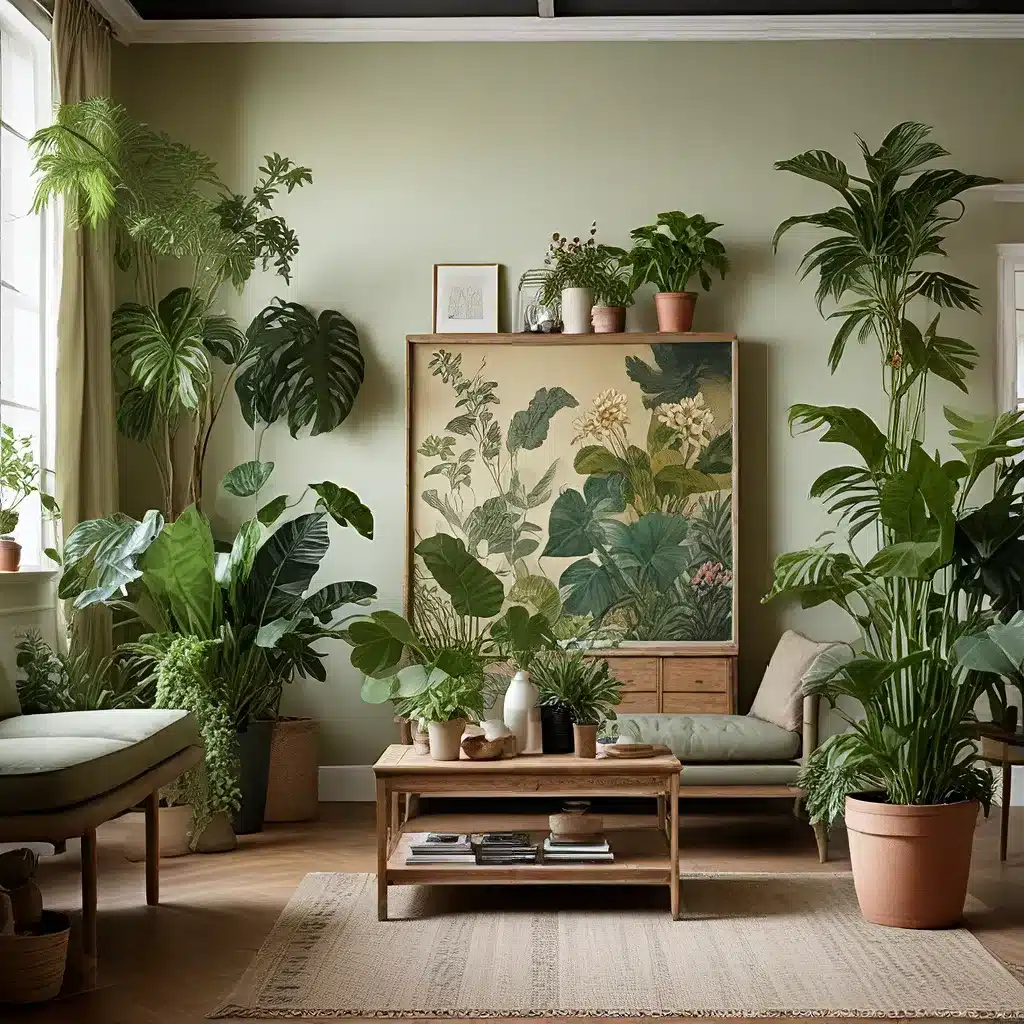
The Enduring Allure of Biophilic Design
In the ever-evolving world of interior design, one trend has consistently captured the hearts and imaginations of homeowners and design aficionados alike: biophilic design. This captivating approach to decorating seamlessly integrates the beauty and serenity of the natural world into our living spaces, creating a harmonious and rejuvenating environment.
At the heart of biophilic design lies a profound appreciation for the healing power of nature. Studies have shown that exposure to natural elements, such as plants, water features, and natural light, can have a profound impact on our physical and mental well-being. By incorporating these elements into our homes, we can tap into the innate human desire to connect with the natural world, fostering a sense of calm, mindfulness, and inspiration.
Embracing the Botanical Brilliance
One of the most captivating aspects of biophilic design is the use of botanical elements, which can transform any space into a lush, verdant oasis. From cascading vines and towering floor plants to delicate succulents and vibrant blooms, the integration of nature’s beauty infuses a sense of life and energy into the built environment.
“Bringing the outdoors in” is not merely a design trend; it’s a philosophy that recognizes the inherent connection between human well-being and the natural world. By strategically placing plants throughout a space, designers can create a visually stunning and psychologically soothing ambiance that encourages relaxation, productivity, and a heightened appreciation for the beauty that surrounds us.
Curating Artful Botanical Displays
Beyond simply adding plants to a room, the art of botanical display lies in the thoughtful curation and arrangement of these living elements. Experienced interior designers understand the importance of scale, proportion, and layering when it comes to creating visually striking botanical compositions.
From dramatic floor-to-ceiling plantings to delicate hanging terrariums, the possibilities for botanical displays are endless. Designers may also incorporate natural materials, such as driftwood, stone, or woven baskets, to enhance the organic feel of the space and create a harmonious, cohesive aesthetic.
One particularly captivating trend in biophilic design is the use of framed botanical art and pressed floral arrangements. These pieces not only celebrate the beauty of nature but also add a touch of elevated sophistication to a space. By strategically placing these botanical artworks, designers can create visual focal points and further reinforce the connection between the interior and the natural world.
Harmonizing Color, Texture, and Light
Successful biophilic design is not just about the inclusion of plants; it’s about the harmonious integration of color, texture, and light to create a cohesive and visually captivating environment.
Designers often draw inspiration from the colors found in nature, such as vibrant greens, earthy neutrals, and splashes of floral hues. By incorporating these colors throughout the space, whether through fabrics, wall treatments, or accessories, the overall aesthetic becomes grounded and soothing.
Texture is another essential element in biophilic design, as it helps to create depth, interest, and a tactile connection to the natural world. Smooth river stones, woven baskets, and the soft, velvety leaves of plants can all contribute to the sensory experience of the space.
Lastly, the strategic use of natural light is a crucial component of biophilic design. By maximizing the amount of daylight that filters into a room, designers can create a sense of openness and connection to the outdoors, further enhancing the restorative qualities of the space.
Personalized Luxury and Comfort
While biophilic design is rooted in a deep appreciation for the natural world, it also offers an opportunity for homeowners to infuse their personal style and preferences into their living spaces. By collaborating with experienced interior designers, clients can curate a botanical-inspired oasis that reflects their unique taste and lifestyle.
Urban Grace Interiors, for example, specializes in creating luxurious and personalized biophilic designs that seamlessly blend natural elements with bespoke furnishings and finishes. Their approach to biophilic design is not just about adding plants; it’s about crafting a harmonious, visually stunning, and deeply restorative environment that caters to the specific needs and desires of each client.
Whether it’s the incorporation of a custom-designed living wall, the inclusion of a soothing water feature, or the thoughtful selection of botanically-inspired textiles and accessories, the possibilities for personalized biophilic design are truly endless. By working closely with a design professional, homeowners can transform their living spaces into rejuvenating sanctuaries that nourish the mind, body, and soul.
Cultivating Biophilic Bliss: A Holistic Approach
As the demand for sustainable, nature-inspired design continues to grow, the principles of biophilic design are becoming increasingly essential in creating healthy, harmonious, and visually captivating living spaces. By embracing the beauty and restorative power of the natural world, homeowners and designers alike can cultivate a sense of botanical bliss that transcends mere aesthetics and touches the very core of our human experience.
From the careful curation of botanical displays to the harmonious integration of color, texture, and light, the art of biophilic design offers a holistic approach to elevating the indoor environment. By collaborating with experienced professionals, homeowners can transform their homes into sanctuaries that nourish the mind, body, and soul, creating a lasting connection to the natural world that resonates long after the last plant is placed.
So, whether you’re a seasoned design enthusiast or simply seeking to bring a touch of nature into your living space, the principles of biophilic design offer a transformative path towards a more balanced, rejuvenating, and artfully styled home.

